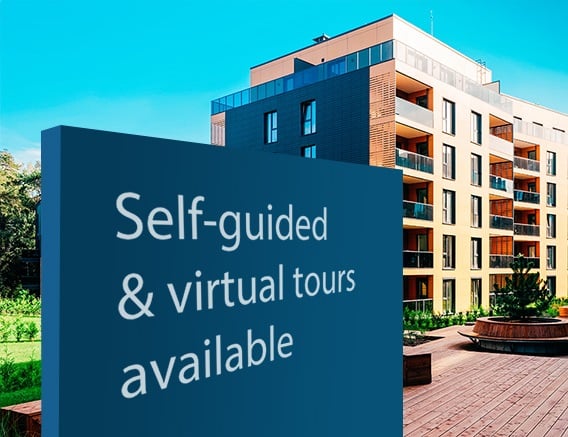An increasing number of leasing agencies are moving towards partly or fully virtual leasing — continuing a trend that began during the COVID pandemic in the early years of the decade when restrictions on in-person meetings meant that both agents and tenants had to adapt to a safer process of viewing and leasing a property. Although health concerns are no longer a major driving factor, the practice continues to grow in popularity. We’ve looked at the advantages and disadvantages of this new model.
What is virtual leasing?
Virtual leasing describes moving all of the tasks that a leasing agent would usually carry out to lease a property from in-person to online. Technologies such as virtual tours, video conferencing, electronic payments, and online document sharing and signing are combined to remove the need for the agent or the prospective tenant/buyer to meet in person at any stage of the process.
Why is virtual leasing on the rise?
Virtual leasing techniques have existed since the early days of advertising properties online. Agencies were quick to adopt features such as 360º virtual tours and online document exchange, moving to video tours and even VR as these technologies became more common and cost-effective.
But the single biggest driver of the shift towards virtual-only leasings was undoubtedly the coronavirus pandemic — when legal restrictions on movement and in-person meetings forced agencies and tenants alike to adapt quickly.
The broader cultural shift towards remote working and familiarity with video conferencing has meant that even post-pandemic, the majority of consumers remain open to doing business either wholly or partly virtually.
What are the virtual leasing technology options available?
Virtual leasing relies on a combination of web or app-based technologies to carry out tasks that would usually require in-person meetings to view properties or for the transfer of physical items such as keys, contracts, or payments.
Video tours or more advanced 360º virtual reality tours can be used instead of in-person visits, to allow tenants to explore each area of the property.
Alternatively, if an in-person visit is still desired, smart access control technologies can allow agents to grant time-restricted remote access to a prospective tenant so they can make an independent viewing when convenient, using their smartphone to gain access.
Video conferencing tools such as Zoom or Microsoft Teams can be used to hold meetings remotely, removing the need for renters to visit the agency office to discuss terms.
Online document sharing and electronic signing applications allow contracts to be exchanged over the Internet without the need for paper copies or in-person signatures. And with modern online banking services, payments can be handled quickly and easily via a website or mobile app.
What are the advantages of virtual leasing over in-person viewing?
The most obvious advantage is the time saved — for both the leasing agent and the potential tenant. Removing the need for either party to attend property viewings or visit the leasing agency’s office for document review and signing saves considerable time — and greatly reduces time lost to no-shows or late arrivals at appointments due to traffic and other factors.
With that also comes added convenience. Having agreements and contracts stored digitally means there’s no risk of losing important documents. Reducing the time needed for each viewing helps agents fit more into their day, and helps tenants view more properties in their limited free time. And providing self-service viewings, whether virtually or in-person, makes it easier to find an appointment time that works.
All of this means that agents are able to process and complete lease agreements much more rapidly than before, which cuts down on turnaround time and reduces the cost burden of maintaining vacant properties for weeks or months between tenancies.
What are the pitfalls to look out for when leasing virtually?
Although virtual tours — especially those designed in immersive 3D — can give prospective tenants a much better feel for a property than simply viewing an album of photos, they still fall short on a number of details.
Potential leaseholders may be concerned that without visiting a property themselves, they can’t assess aspects like lighting, noise levels, build quality, and the numerous other physical aspects of a home that you have to see in person to truly understand.
And as virtual tours focus only on the property itself, usually restricted to the interior, they don’t offer any insight into the local neighborhood or the wider development.
Without visiting in person there’s no opportunity for prospective occupiers to speak to their potential neighbors or property managers and get first-hand information about what it’s like to live in the area — something that is traditionally a valuable and trusted source of information for renters or buyers.
Of course, combining a virtual leasing process with remote access for viewings, for example by using smart access controls to grant property viewers independent, time-based access to the vacant unit can solve these issues — providing a best-of-both-worlds scenario.



